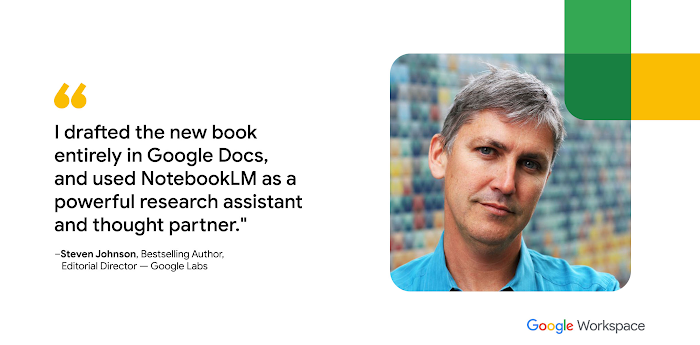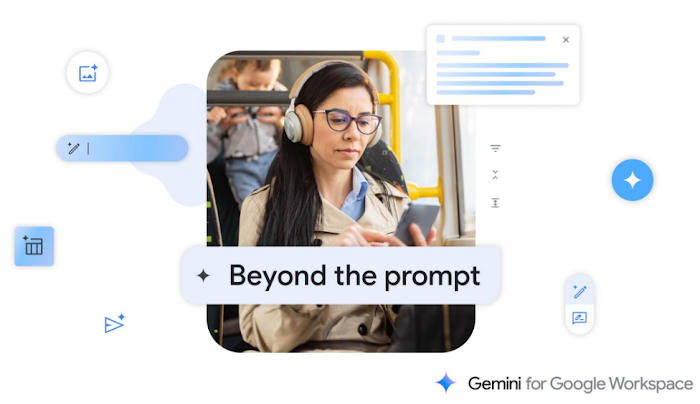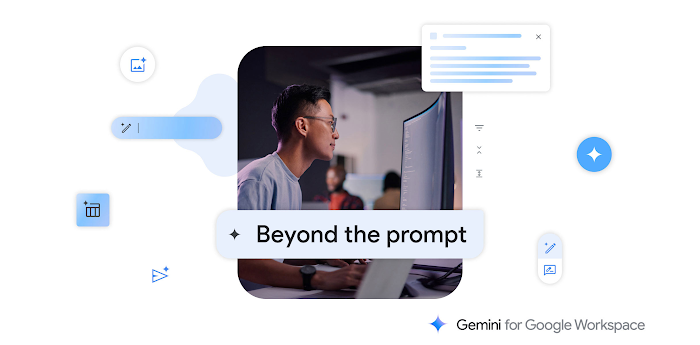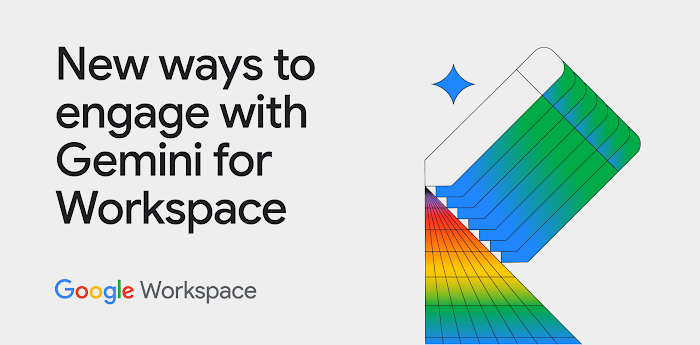Beyond the prompt:
Part 3 - You don’t have to be an engineer to write great Gen AI prompts
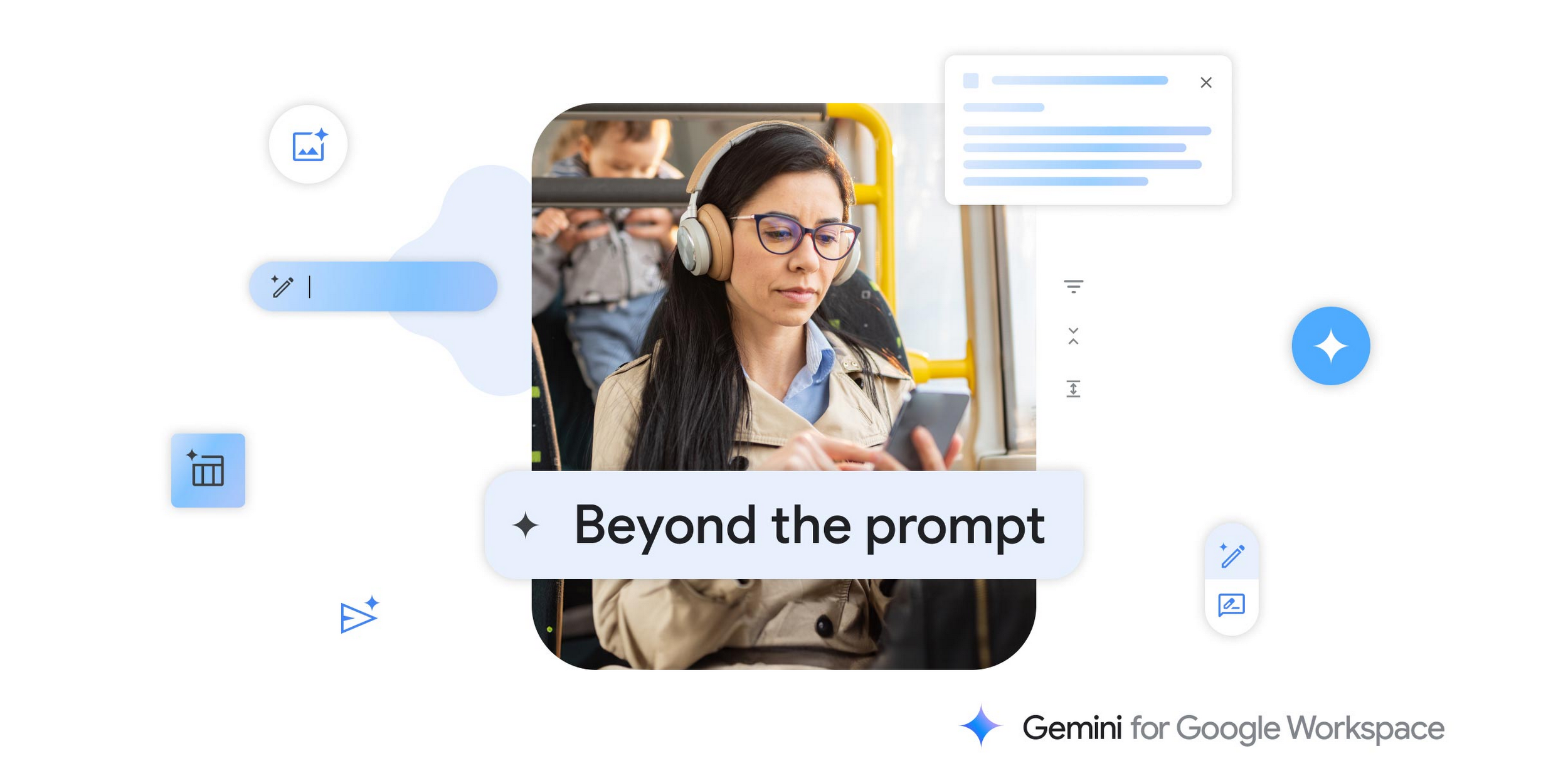
Tricia Davis-Muffett
Senior Director, Google Workspace Customer Marketing
Google Workspace Newsletter
Keep up with the evolving future of work and collaboration with insights, trends, and product news.
SIGN UPWelcome back to Beyond the prompt , our series with actionable tips to get the most out of Gemini for Google Workspace. We’ve covered the basics of how to write effective prompts in our first two posts, but equally important to learning these skills is your mindset when embracing generative AI.
This year at Google Cloud Next, we handed out thousands of bound copies of our Gemini for Workspace Prompting Guide 101 . It’s a long-form, analog throwback — 70 pages filled with dozens of real-world examples of how to use Gen AI across all kinds of roles, from executives and entrepreneurs to HR, sales, and customer service. In addition to sharing the basics of good prompting ( let’s hear it for Persona, Task, Context, and Format !), we also shared this helpful nugget from our own research:
Based on what we have learned during our Workspace Labs program, the most successful prompts average around 21 words, yet prompts people try without knowing this are often short — usually less than nine words .
When my team handed out copies of the guide at various sessions, I heard how grateful our customers were to have this knowledge in their hands and I watched them circulate it with their colleagues. I also heard some confessions, including a team that said they spent part of their onboarding with Gemini for Google Workspace feeding it obscure, short, and sometimes confusing prompts, as if they were throwing a handful of key terms into a search. Nonetheless, they couldn’t help being disappointed when the results that came back were less than stellar.
Many of us had similar experiences in the early months of the generative AI era. We asked our AI assistants to write a business plan or speech without giving enough information, and when the responses weren’t quite what we wanted, we let out a sigh. Very quickly, though, we started to find real-world applications for a new tool that was rapidly growing in sophistication. Along the way, we also got better at prompting, learning that the more you prompt, and the more detailed your prompts, the better the results.
At the same time, especially in the first half of 2023, social media and the job boards lit up with the new craze of prompt engineering. An article from The Washington Post entitled “ Tech’s hottest new job: AI whisperer. No coding required ” described the job of a prompt engineer as “[the] role involves creating and refining the text prompts people type into the AI in hopes of coaxing from it the optimal result. Unlike traditional coders, prompt engineers program in prose, sending commands written in plain text to the AI systems, which do the actual work.”
Since then, the prompt engineering craze has died down a bit, but the anxiety for non-engineers about interacting with this complex technology has lingered. Customers tell us all the time that it’s daunting to interact with generative AI and it feels like they need specialized knowledge. But the whole idea of prompting is to use natural, conversational language to “program” the technology. Those conversations vary in depth, breadth, and quality of “output.” Large Language Models are not deterministic, which means they don’t produce the exact same output, even with the exact same inputs. There is, by definition, variability and a process of iteration involved.
Given all this, maybe prompt literacy, or prompt fluency, is a better way of framing the discussion for most of us. After all, we can’t engage in a conversation with AI without first becoming fluent in its language.
To be clear, there is a place for prompt engineering, but it’s not among the millions of everyday users who are putting generative AI to work to boost their productivity, enhance their creativity, or take back time for higher-value work. We need to change the way we think about prompting — engage in it with curiosity and an eagerness to learn and let go of the fear. This will become easier and easier as the technology progresses: As AI systems continue to evolve, they will only get more intuitive and better at understanding context and natural language. Generative AI will become more accurate but also more forgiving, so that even if we don’t include all the elements of a good prompt, they’ll get better at filling in the gaps.
But, whether we’re marketers, executives, salespeople, or HR professionals, we’ll see better results from generative AI if we stop being afraid of the complexity, approach it with a sense of experimentation, and become fluent in writing good prompts. As we’ve talked about elsewhere, collaborating with Gen AI will become a new must-have rhythm at work , with prompting a core, foundational skill. For most of us, though, this isn’t engineering. It’s a conversation.
Luckily, we have a few ways to help you start your own conversations: You can download our prompt guide , or catch up on the earlier posts in our Beyond the prompt blog series .

